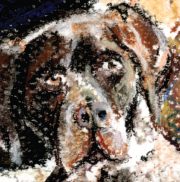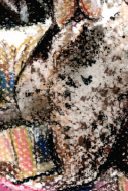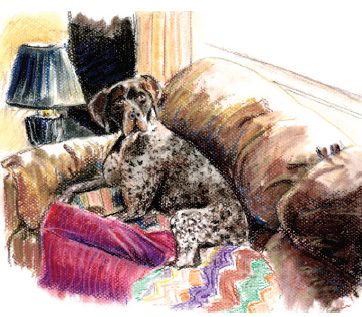Short fur, especially from a distance, may not look like fur at all.
Animals such as giraffes, horses, and some dogs have such short fur that the bone and muscle structure is easily seen beneath it …
… which makes accurate drawing essential, since you can’t disguise mistakes with shaggy lines. Short fur is depicted largely by the color and pattern of the coat.
If you’re drawing in pastel, you’ll find that the tooth of the paper can aid you in making irregular fur pattern.
Draw the animal accurately with willow charcoal, and then begin laying in tone with hard pastel sticks, feathering and scumbling different colors into solid tone to keep the picture lively.
Blend the first tone and then start darkening the fur with soft pastels. If the fur has a pattern on it, like stripes or spots, shade the undercoat before you add the pattern. That way, you won’t have to work around the patterned areas so much.
For coats of small speckles, the dusting technique works very nicely. Shave particles of pastel dust onto the paper and press them in with a palette knife.
For larger spots, use a pastel pencil to draw the spots on, then blend with a small tortillon.
Add several colors to the fur even if it looks like one solid color. In light-struck areas, white fur may have reds or yellows in it, and in shadow it may appear blue, tan, or brown.
Feathering different colors will keep your drawing from looking flat.
In the face and in select areas around the body, sharpen the features by darkening lines, adding highlights, and cleaning up shapes.
Want To Learn More…

We give you clear videos showing you step-by-step how to draw animals.
With clear (and fun) instructions on how to draw … you’ll learn at your own pace in the comfort of your home.
The artist has chosen popular animal pictures and will show you how to draw each one in color.
Each image has high definition videos outlining the animal in pencil and adding color to the image.





